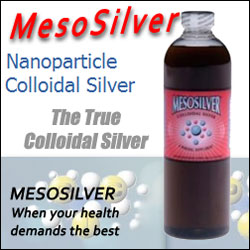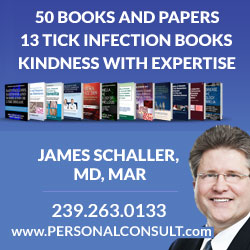LYME DISEASE SYMPTOM CHECKLIST
James Schaller, M.D., M.A.R.
The following checklist is not meant to be complete or authoritative. Information about Lyme disease is constantly emerging and changing. Therefore any checklist is intended for use as a starting point. In traditional medicine, a physician performs a complete history and physical. Labs and studies assist in clarifying the differential diagnosis. In Lyme disease, much debate exists about laboratory kits, the alteration of kits to have fewer possible bands, and which labs are optimally sensitive and specific. This checklist is not intended to address that issue or treatment.
Over 200 vectors carry the Ixodes tick, which is the most commonly known insect spreading Lyme disease. With so many vectors, the underlying assumption behind this checklist is that Lyme is not rare in North America, Europe, South America, Russia, Africa or Asia.
We know Lyme disease is highly under-reported.
Immediately upon the onset of a tick bite, it transmits a pain killer, anti-histamine and an anti-coagulant. Based on animal studies, it is also possible the bulls-eye rash is less common then assumed, in part because injections of spirochete related material in laboratory animals only show a rash with the second injection.
This checklist is offered with the sincere wish that others will improve on it. It is this author’s personal belief that tick and flea-borne infection medicine is as specialized as HIV and Hepatitis medical science.
Some of the checklist materials might be new to you, which underscores the need for another scale to add to the ones currently in existence. This list is based on a massive review of thousands of papers over a decade of full-time reading, 2012 science revelations, and/or massive chart reviews. Since modern Lyme disease seems to focus on tick borne disease and other laboratory testing, I will start with lab testing considerations. If a lab test has a value or a percentage, the numbers I am picking are meant to avoid missing positive patients. I am concerned about physicians and other healthcare workers not treating an infected patient, who over time can experience disability or death at a frequency that is impossible to determine.
LABORATORY TESTING—INDIRECT AND DIRECT
1. Vitamin D level is in the lowest 20%. If you supplement, it should be in top 50%.
2. CD57 or CD58 is in the lowest 20th percentile
3. Free testosterone is in 10th percentile or below
4. In 5% of patients the testosterone or free testosterone is over the normal range.
5. DHEA is in lower 20%. Or rarely is it fully over the top level.
6. Free dihydrotestosterone is in the lowest 20th percentile or well over the normal range.
7. Epstein Barr Virus is abnormal in any measure. [This virus is believed to be positive over normal positive levels in the presence of infections or high inflammation.]
8. On the Western Blot, IgG or IgM any species specific band at any blood level, e.g., 18, 21, 23, 30, 31, 34, 37, 39, 83, 93.
9. A free T3 level under 2.8 [the normal bottom range in 1990 was 2.6; the influx of large numbers of elderly patients reset the healthy “normal” range].
10. Positive for viruses such as CMV, HHP-6, Coxsackie B Types 1, 2, 3, 4, 5, 6, Parvo B-19 or Powassan virus
11. Positive for Mycoplasma, e.g. mycoplasma pneumoniae.
12. The patient is positive for infections other than routine Lyme, [that is Borrelia burgdorferi sensu stricto, Borrelia afzelii and Borrelia garinii]. Some of the other infections also carried by infectious ticks, fleas or other vectors include Babesia (duncani, microti or other), Anaplasma (HGA), Ehrlichia (various species/strains), Rocky Mountain or other Spotted Fevers, Brucellosis, Leptospirosis, Q-fever, STARI (Master’s Disease), Malaria, and Bartonella [e.g., B. henselae, B. quintana, B. elizabethae and B. melophagi]. Once tests are commercially available for testing all forms of protozoa affecting humans, including FL1953, all Bartonella species, and Borrelia miyamotoi and other Lyme species, reporting should increase.
13. IL-B is in lowest 10th percentile
14. IL-6 is in lowest 10th percentile
15. TNF-alpha is under 2, or in lowest 20th percentile
16. A WBC count was, or is, under 4.5
17. Eosinophil level in the CBC manual exam is either at 0-1 or 6-7
18. Total manual Eosinophil level is 140 or less
19. XRAY or other study shows cartilage defects in excess of injury or age median
20. If a full auto-immunity panel is run with at least eight different tests, two are positive; for example, you have a positive anti-gliadin and a positive thyroid peroxidase.
21. Positive or near positive (borderline) ELISA, PCR, or a positive tissue biopsy; or a tick from your body is positive for Lyme or other tick infection
22. Lab tests show high inflammation, e.g., a high C4a, elevated cholesterol and C-peptide. These are never specific just for Lyme
23. Lab tests show a MSH level under 30 [the reference range of 0-40 is due to the increase of very sick patients tested, and 40-85 is a better reference range which was used before the flood of the sick reset the range of normal]. MSH is an anti-inflammatory hormone.
24. VIP is under 20. This is an anti-inflammation chemical.
BODY EXAMINATION RESULTS
25. Weight loss or gain in excess of 20 pounds in 12 weeks
26. A round or oval rash with a dark center was or is present in a loose “bulls-eye pattern.” Other size and shape rashes that have no other cause after exposure to ticks and vectors.
27. Healing is slow after scratches or surgery. For example, after a cat scratch, flea bite or tick bite the mark is still visible later.
28. Skin on arms, hands or feet has a texture like rice paper.
29. Clear reaction and effect seen with antibiotic treatment. Specifically, a marked improvement or worsening of a serious medical problem or function is observed with a spirochete killing treatment, e.g., doxycycline, tetracycline, minocycline, any penicillin such as amoxicillin, azithromycin, clarithromycin or cefuroxime.
30. Presence of skin tags, red papules of any size, excess blood vessels compared to peers, and stretch marks with color or in significant excess of peers.
31. Moles and raised or hard plaques in excess of the few on normal skin.
32. Areas of skin with ulcerations such as those seen in syphilis, but at any location on the body.
33. Areas of clear hypo-pigmentation and hyper-pigmentation
34. Positive ACA (Acrodermatitis chronica atrophicans) which is a sign of long term untreated Lyme disease. Some report ACA begins as a reddish-blue patch of discolored skin, often of the hands or feet. It may include the back in some patients. The lesion slowly atrophies over months to years, with many developing skin that is thin, dry, hairless, wrinkled and abnormally colored. The color of the extremities such as hands and feet can be red, dark red, brown, dark blue or purple.
SAMPLE NEUROLOGY EXAM
35. Patient’s short-term memory is poor. For example, if asked to recall these numbers—23, 5, 76, 43 and 68—the patient cannot recall them.
36. Patient cannot reverse four numbers, so if given—18, 96, 23 and 79—the patient cannot do it.
37. If asked to subtract 17 from 120, (college graduate), it cannot be done in a timely manner. If a high school graduate, subtract 7 from 100 and continue to subtract by 7 four times in 20 seconds.
38. Light headedness upon standing quickly in excess of peers, and with no clear cause
39. Dizziness unrelated to position
40. Dizziness made worse by Lyme killing antibiotics
41. Trouble doing a nine step heel to toe straight line walk test with fingers slightly in pockets [The patient should not sway or need their hands pulled out to prevent a fall]. In patients with past experience in skating, skiing, dance or ballet this should be very easy and is rarely a challenge to such people. If it is not easy, it is suspicious medically, but not only for Lyme disease.
42. Trouble performing a one leg lift, in which one leg is lifted 12-18 inches off the ground in front of you, as you count, e.g., “one Mississippi, two Mississippi, etc.”
43. Positive nystagmus [your eye jerks when you look right or left]
PATIENT’S REPORTED PHYSICAL HISTORY
44. Illnesses that come and go and decrease functioning with no certain cause
45. Serious illnesses that undermine function with no clear cause, and which affect more than one body organ
46. An abnormal lab result, physical exam finding or illness that is given many diagnoses or has no clear cause.
47. Mild to severe neurological disorders or psychiatric disorders
48. A very profound neurological disease which does not clearly fit the labs, studies and course of the illness
49. A moderate or severe medical, psychiatric or neurological illness. [Many severe disorders can be associated with spirochetes such as those causing syphilis, and some propose that Lyme is also related to a well-known serious brain disease].
50. Severe medical, psychiatric or neurology illness with uncommon features, such as Parkinson’s disease, appearing at a young age
51. Facial paralysis (Bell’s palsy)
52. Personality has changed negatively and significantly for no clear reason.
53. Psychosis at any age, but especially after 40 years of age when usually it would have already manifested itself
54. Severe anxiety
55. Mania or profound rage
56. Depression
57. Depression or anxiety that did not exist when you were less than 25 years of age
58. Irritability
59. Any one of the following: paranoia, dementia, schizophrenia, bipolar disorder, panic attacks, major depression, anorexia nervosa or obsessive-compulsive disorder.
60. Adult onset ADHD/ADD [Primary psychiatric biological ADD or ADHD is present at 7 years of age. Adult onset is a sign of a medical condition.]
61. Increased verbal or physical fighting with others
62. Functioning at work or in parenting is at least 20% reduced
63. Patience and relational skills are decreased by 20% or more
64. A mild to profound decrease of insight, i.e., an infected patient does not see their decreased function, failed treatment or personality change
65. A new eccentric rigidity to hearing new medical or other important information
66. Difficulty thinking or concentrating
67. Poor memory and reduced ability to concentrate
68. Increasingly difficult to recall names of people or things
69. Difficulty speaking or reading
70. Difficulty finding the words to express what you want to say
71. Inability to learn new information as well as in the past [receptive learning]
72. Repeating stories or forgetting information told to close relations, such as a spouse, roommate, sibling, best friend or parent
73. Confusion without a clear reason
74. An addiction that results in relapse in spite of sincere, reasonable and serious efforts to stop
75. Fatigue in excess of normal, or fatigue that is getting worse
76. Trouble sleeping including mild to severe insomnia and disrupted sleep
77. Sleep in excess of 9 hours a day or night, or sleeping in excess of 9 hours every day if allowed
78. Trouble falling asleep
79. Trouble staying asleep [Taking a 5 minute bathroom break does not count]
80. Gastritis or stomach sensitivity not caused by H. Pylori
81. Intestinal troubles that are unable to be fully managed and/or which have no clear diagnosis
82. Nausea without a clear reason
83. Sensitivity to lights, sounds, touch, smell or unusual tastes
84. Sensitivity to cleaning chemicals, fragrances and perfumes
85. Ear problems such as pain or increased ear “pressure.”
86. Any trouble with the senses (vision, sound, touch, taste or smell). The use of corrective lenses or contacts does not count, unless the prescription is changed more than expected.
87. Buzzing or ringing in ears
88. Double vision, floaters, dry eyes, or other vision trouble
89. Conjunctivitis (pinkeye) or occasional damage to deep tissue in the eyes
90. Blood clots fast when you get a cut, or you have a diagnosed problem with clotting. This may also be seen in blood draws where blood draw needle clots when blood is being removed. If on a blood thinner, blood thinness level goes up and down too much.
91. Cardiac impairment
92. Chest pain with all labs and studies in normal range
93. Occasional rapid heartbeats (palpitations)
94. Heart block/heart murmur
95. Heart valve prolapse
96. Shortness of breath with no clear cause on pulmonary function tests, examination, lab testing, X-rays, MRI’s, etc.
97. Air hunger or feelings of shortness of breath
98. Someone in your neighborhood within 400 yards in any direction of your dwelling has been diagnosed with a tick borne infection. [This includes vacation locations].
99. You have someone living with you with any type of tick-borne infection—this assumes they were not merely tested for one infection. [It is not proven that the small Lyme-carrying ticks only carry Lyme, and it is possible some carry other infections without carrying Lyme at all].
100. You have removed any ticks from your body in your lifetime.
101. You have removed ticks from your clothing in your lifetime.
102. After a tick or bug bite, you had a fever for at least 48 hours.
103. After a tick or bug bite, you were ill.
104. Grew up or played in areas with many small wild mammals.
105. When you are in a room that has visible mold or smells like mold and you start to feel ill, you do not return to your baseline health in 24 hours.
106. Any discomfort within two minutes of being in a musty or moldy location
107. Gaining or losing weight in a manner clearly inconsistent with diet and exercise
108. New or more food allergies than ten years ago
109. Feel worse after eating breads, pasta or sweets
110. No longer tolerate or enjoy alcohol
111. Anti-histamines are bothersome, more so than in the past.
112. Reaction to medications is excessive (you are very “sensitive” to medications)
113. Your response to antibiotics is significantly positive and you feel more functional, or you have the opposite reaction and feel worse, feeling ill, fatigued or agitated.
114. Numbness, tingling, burning, or shock sensations in an area of skin
115. One or more troublesome skin sensations that move over months or years and do not always stay in one location
116. Rash or rashes without a simple and obvious cause
117. Rashes that persist despite treatment
118. Eccentric itching with no clear cause
119. Hair loss with no clear cause
120. Muscle pain or cramps
121. Muscle spasms
122. Muscle wasting without a clear cause
123. Trouble with your jaw muscle(s) or joint insomnia (TMJ)
124. Joint defects in one joint with no clear cause if 20 or younger
Joint defects in two joints or more if 35 or younger
Joint defects in three or more locations if younger than 55 with no clear trauma
125. Swelling or pain (inflammation) in the joints. [Most patients never have joint disease].
126. Joint pain that shifts location
127. Neck stiffness
128. Chronic arthritis with or without episodes of swelling, redness, and fluid buildup
129. Chronic pain in excess of what seems reasonable
130. Nerve pain without a clear cause
131. Headaches that do not respond fully to treatment, or which are getting worse
132. New allergies or increased allergies over those of your peers
133. Any autoimmunity–Lyme and other tick infections, over many years, increase inflammation and decrease anti-inflammation chemicals. We believe this leads to increased food sensitivities, increased autoimmunity and a heightened sensitivity to various chemicals and medications.
134. Day time sweats
135. Night time sweats
136. Chills
137. Flu-like symptoms
138. Bladder dysfunction of any kind
139. Treatment resistant interstitial cystitis
140. Abnormal menstrual cycle
141. Decreased or increased libido
142. Increased motion sickness
143. Fainting
144. A spinning sensation or vertigo
ENVIRONMENT
145. Pets or farm animals positive with ANY tick borne virus, bacteria or protozoa, or clinical symptoms without a clear diagnosis or cause.
146. The patient’s mother is suspected of having or has been diagnosed with Babesia, Ehrlichia, Rocky Mountain Spotted Fever, Anaplasma, Lyme, Bartonella or other tick borne disease based on newer direct and indirect testing, or clinical signs and symptoms.
147. A sibling, father, spouse or child with any tick borne infection
148. Casual or work-related exposure to outdoor environments with brush, wild grasses, wild streams or woods (Examples- golf courses, parks, gardens, river banks, swamps, etc.)
149. Pets, e.g., horses, dogs or cats, have had outdoor exposures to areas such as brush, wild grasses, wild streams or woods.
150. Exposure to ticks in your past homes
151. Clear exposure to ticks during vacations or other travels
152. You played in grass in the past.
153. You have been bitten by fleas.
154. You have been scratched by a cat or dog.
FINAL WORDS
Some of the above listed signs and symptoms fit other infections that may be more common than Lyme disease. Unfortunately, the research and experience indicating diverse infections carried by the Ixodes and other ticks is ignored. Further, “testing” usually involves one test for a mono-infection–Borrelia or Lyme. Ticks and other vectors should never be assumed to carry only Lyme disease.
Please note that when we are talking about the Ixodes tick we are not referring to this as a “deer tick” since it has over 200 vectors (Ostfeld). Many of the tick reduction options presently suggested are not successful in accomplishing their goals. Reducing deer populations, once thought to reduce tick populations and incidence of Lyme disease, may simply increase tick numbers in mammals and other carriers that live closer to humans.
All healers have their familiar way of thinking, testing and treating. Kuhn has shown we are all biased and struggle to be objective. Further, tick and flea infections have almost infinite pathological effects because the human body and these clusters of infections are so complex. I have not suggested a grid or a set number of symptoms, because one would not fit this list. Simply, the goal of this checklist is to have you think broadly.
You cannot use this checklist to diagnose Lyme disease or to rule it out.
A Lyme checklist is very medically important, since it is still an emerging illness and can sometimes disable or increase mortality risk in patients of any age if not diagnosed and treated early in the infection.
Writings in the past fifteen years have either viewed Babesia and Bartonella as mere “co-infections,” or a footnote of a spirochetal infection [i.e., Lyme]. Either infection can hide for decades, and then possibly disable or kill a person by causing a clot, heart arrhythmia or by other means.
The detection of Lyme from stained tissue samples or blood is very difficult. Currently, the well-established indirect lab test patterns presented are not used or understood by all health care professionals. While this is fully understandable, I hope it may change in the coming decade. Tick infections have systemic impacts on the body, and are not limited to effects reported in journal articles, a few books or any national or international guidelines.
Dr. Schaller has published the four most recent textbooks on Babesia and the only recent textbook in any language on Bartonella. His most recent book on Lyme, Babesia and Bartonella includes a “researchers only” list of over 2,600 references considered to be a start for basic education in tick infection medicine.
He published articles on both Babesia as a cancer primer and Bartonella as a profound psychiatric disease under the supervision of the former editor of the Journal of the American Medical Association (JAMA). He also published entries on multiple tick and flea-borne infections, including Babesia, Bartonella and Lyme disease, in a respected infection textbook endorsed by the NIH Director of Infectious Disease.
Dr. Schaller is the author of seven texts on tick and flea-borne infections. He is rated a TOP and BEST physician, with the latter being awarded to only 1 in 20 physicians by physician ratings. He is also rated a TOP physician by patients, again ranking in the top 1 in 20 physicians.
COPYRIGHTED C 2011 JAMES SCHALLER, M.D., M.A.R. version 22.
This form may not be altered if it is printed or posted, in any manner, without written permission. It can be printed for free to assist in diagnostic reflections, as long as no line is redacted or altered, including the introduction or final paragraphs. Dr. Schaller does not claim that this is a flawless or final form, and defers all diagnostic decisions to your licensed health professional.
Bibliography
Aalto A, Sjöwall , Davidsson L, Forsberg P, Smedby O. Brain magnetic resonance imaging does not contribute to the diagnosis of chronic neuroborreliosis. Acta Radiol. 2007 Sep;48(7):755-62. PMID:17729007
Aberer E. [Neuroborreliosis or Borrelia hysteria. This case becomes a nightmare!].[Article in German]. MMW Fortschr Med. 2006 Nov 9;148(45):8. PMID:17615738
Aboul-Enein F, Kristoferitsch W. Normal pressure hydrocephalus or neuroborreliosis? Wien Med Wochenschr. 2009;159(1-2):58-61. PMID:19225737
Alaedini A, Latov N. Antibodies against OspA epitopes of Borrelia burgdorferi cross-react with neural tissue. J Neuroimmunol. 2005 Feb;159(1-2):192-5. Epub 2004 Nov 26. PMID:15652419
Angelakis E, Billeter SA, Breitschwerdt EB, Chomel BB, Raoult D. Potential for tick-borne bartonellosis. Emerg Infect Dis. 2010 Mar;16(3):385-91.
Auwaerter PG. Point: antibiotic therapy is not the answer for patients with persisting symptoms attributable to lyme disease. Clin Infect Dis. 2007 Jul 15;45(2):143-8. Epub 2007 Jun 5. PMID:17578771
Banarer M, Cost K, Rychwalski P, Bryant KA. Chronic lymphocytic meningitis in an adolescent. J Pediatr. 2005 Nov;147(5):686-90. PMID:16291364
Baneth G, Breitschwerdt EB, Hegarty BC, Pappalardo B, Ryan J. A survey of tick-borne bacteria and protozoa in naturally exposed dogs from Israel. Vet Parasitol. 1998 Jan 31;74(2-4):133-42.
Barbour AG. Laboratory aspects of Lyme borreliosis. Clin Microbiol Rev 1988 Oct;1(4):415-31.
Barie PS. Warning! Danger Will Robinson! Lyme disease clinical practice guidelines of the Infectious Diseases Society of America, activist patients, antitrust law, and prosecutorial zeal. Surg Infect (Larchmt). 2007 Apr;8(2):147-50. PMID:17437359
Batinac T, Petranovic D, Zamolo G, Petranovic D, Ruzic A. Lyme borreliosis and multiple sclerosis are associated with primary effusion lymphoma. Med Hypotheses. 2007;69(1):117-9. Epub 2007 Jan 2. PMID:17197115
Begon E. [Lyme arthritis, Lyme carditis and other presentations potentially associated to Lyme disease].[Article in French]. Med Mal Infect. 2007 Jul-Aug;37(7-8):422-34. Epub 2007 Aug 14. PMID:17698309
Benhnia MR, Wroblewski D, Akhtar MN, Patel RA, Lavezzi W, Gangloff SC, Goyert SM, Dvoráková J, Celer V. [Pharmacological aspects of Lyme borreliosis].[Article in Czech]. Ceska Slov Farm. 2004 Jul;53(4):159-64. PMID:15369225
Bhate C, Schwartz RA. Lyme disease: Part II. Management and prevention. J Am Acad Dermatol. 2011 Apr;64(4):639-53; quiz 654, 653. PMID:21414494
Biesiada G, Czapiel J, Sobczyk-Krupiarz I, Garlicki A, Mach T. Neuroborreliosis with extrapyramidal symptoms: a case report. Pol Arch Med Wewn. 2008 May;118(5):314-7. PMID:18619183
Billeter SA, Levy MG, Chomel BB, Breitschwerdt EB. Vector transmission of Bartonella species with emphasis on the potential for tick transmission. Med Vet Entomol. 2008 Mar;22(1):1-15.
Bitar I, Lally EV. Musculoskeletal manifestations of Lyme disease. Med Health R I. 2008 Jul;91(7):213-5. PMID:18705221
Blanc F. [Epidemiology of Lyme borreliosis and neuroborreliosis in France].[Article in French]. Rev Neurol (Paris). 2009 Aug-Sep;165(8-9):694-701. Epub 2009 May 17. PMID:19447458
Blanc F; GEBLY. [Neurologic and psychiatric manifestations of Lyme disease].[Article in French]. Med Mal Infect. 2007 Jul-Aug;37(7-8):435-45. Epub 2007 Mar 9. PMID:17350199
Bransfield RC, Wulfman JS, Harvey WT, Usman AI. The association between tick-borne infections, Lyme borreliosis and autism spectrum disorders. Med Hypotheses. 2008;70(5):967-74. Epub 2007 Nov 5. PMID:17980971
Brehm M, Rellecke P, Strauer BE. [Inflammatory cardiac diseases by primary extracardial diseases].[Article in German]. Internist (Berl). 2008 Jan;49(1):27-33. PMID:17992497
Breitschwerdt EB. Feline bartonellosis and cat scratch disease. Vet Immunol Immunopathol. 2008 May 15;123(1-2):167-71. Epub 2008 Jan 19. Review.
Breitschwerdt EB, Atkins CE, Brown TT, Kordick DL, Snyder PS. Bartonella vinsonii subsp. berkhoffii and related members of the alpha subdivision of the Proteobacteria in dogs with cardiac arrhythmias, endocarditis, or myocarditis. J Clin Microbiol. 1999 Nov;37(11):3618-26.
Breitschwerdt EB, Blann KR, Stebbins ME, Muñana KR, Davidson MG, Jackson HA, Willard MD. Clinicopathological abnormalities and treatment response in 24 dogs seroreactive to Bartonella vinsonii (berkhoffii) antigens. J Am Anim Hosp Assoc. 2004 Mar-Apr;40(2):92-101.
Breitschwerdt EB, Hegarty BC, Hancock SI. Sequential evaluation of dogs naturally infected with Ehrlichia canis, Ehrlichia chaffeensis, Ehrlichia equi, Ehrlichia ewingii, or Bartonella vinsonii. J Clin Microbiol. 1998 Sep;36(9):2645-51.
Breitschwerdt EB, Hegarty BC, Maggi R, Hawkins E, Dyer P. Bartonella species as a potential cause of epistaxis in dogs. J Clin Microbiol. 2005 May;43(5):2529-33.
Breitschwerdt EB, Kordick DL. Bartonellosis. J Am Vet Med Assoc. 1995 Jun 15;206(12):1928-31. Review.
Breitschwerdt EB, Kordick DL. Bartonella infection in animals: carriership, reservoir potential, pathogenicity, and zoonotic potential for human infection. Clin Microbiol Rev. 2000 Jul;13(3):428-38. Review.
Breitschwerdt EB, Kordick DL, Malarkey DE, Keene B, Hadfield TL, Wilson K. Endocarditis in a dog due to infection with a novel Bartonella subspecies. J Clin Microbiol. 1995 Jan;33(1):154-60.
Breitschwerdt EB, Maggi RG. A confusing case of canine vector-borne disease: clinical signs and progression in a dog co-infected with Ehrlichia canis and Bartonella vinsonii ssp. berkhoffii. Parasit Vectors. 2009 Mar 26;2 Suppl 1:S3.
Breitschwerdt EB, Maggi RG. Comparative medical features of canine and human bartonellosis. Clin Microbiol Infect. 2009 Dec;15 Suppl 2:106-7. Epub 2009 Apr 30.
Breitschwerdt EB, Maggi RG, Cadenas MB, de Paiva Diniz PP. A groundhog, a novel Bartonella sequence, and my father’s death. Emerg Infect Dis. 2009 Dec;15(12):2080-6.
Breitschwerdt EB, Maggi RG, Chomel BB, Lappin MR. Bartonellosis: an emerging infectious disease of zoonotic importance to animals and human beings. J Vet Emerg Crit Care (San Antonio). 2010 Feb;20(1):8-30. Review.
Breitschwerdt EB, Maggi RG, Duncan AW, Nicholson WL, Hegarty BC, Woods CW. Bartonella species in blood of immunocompetent persons with animal and arthropod contact. Emerg Infect Dis. 2007 Jun;13(6):938-41.
Breitschwerdt EB, Maggi RG, Farmer P, Mascarelli PE. Molecular evidence of perinatal transmission of Bartonella vinsonii subsp. berkhoffii and Bartonella henselae to a child. J Clin Microbiol. 2010 Jun;48(6):2289-93. Epub 2010 Apr 14.
Breitschwerdt EB, Maggi RG, Lantos PM, Woods CW, Hegarty BC, Bradley JM. Bartonella vinsonii subsp. berkhoffii and Bartonella henselae bacteremia in a father and daughter with neurological disease. Parasit Vectors. 2010 Apr 8;3(1):29.
Breitschwerdt EB, Maggi RG, Nicholson WL, Cherry NA, Woods CW. Bartonella sp. bacteremia in patients with neurological and neurocognitive dysfunction. J Clin Microbiol. 2008 Sep;46(9):2856-61. Epub 2008 Jul 16.
Breitschwerdt EB, Maggi RG, Robert Mozayeni B, Hegarty BC, Bradley JM, Mascarelli PE. PCR amplification of Bartonella koehlerae from human blood and enrichment blood cultures. Parasit Vectors. 2010 Aug 24;3:76.
Breitschwerdt EB, Maggi RG, Sigmon B, Nicholson WL. Isolation of Bartonella quintana from a woman and a cat following putative bite transmission. J Clin Microbiol. 2007 Jan;45(1):270-2. Epub 2006 Nov 8.
Breitschwerdt EB, Maggi RG, Varanat M, Linder KE, Weinberg G. Isolation of Bartonella vinsonii subsp. berkhoffii genotype II from a boy with epithelioid hemangioendothelioma and a dog with hemangiopericytoma. J Clin Microbiol. 2009 Jun;47(6):1957-60. Epub 2009 Apr 15.
Breitschwerdt EB, Mascarelli PE, Schweickert LA, Maggi RG, Hegarty BC, Bradley JM, Woods CW. Hallucinations, sensory neuropathy, and peripheral visual deficits in a young woman infected with Bartonella koehlerae. J Clin Microbiol. 2011 Sep;49(9):3415-7. Epub 2011 Jul 6.
Breitschwerdt EB, Sontakke S, Cannedy A, Hancock SI, Bradley JM. Infection with Bartonella weissii and detection of Nanobacterium antigens in a North Carolina beef herd. J Clin Microbiol. 2001 Mar;39(3):879-82.
Breitschwerdt EB, Suksawat J, Chomel B, Hegarty BC. The immunologic response of dogs to Bartonella vinsonii subspecies berkhoffii antigens: as assessed by Western immunoblot analysis. J Vet Diagn Invest. 2003 Jul;15(4):349-54.
Brtkova J, Jirickova P, Kapla J, Dedic K,, Pliskova L. Borrelia arthritis and chronic myositis accompanied by typical chronic dermatitis. JBR-BTR. 2008 May-Jun;91(3):88-9. PMID:18661710
Burns RB, Hartman EE. A 58-year-old man with a diagnosis of chronic Lyme disease, 1 year later. JAMA. 2003 Dec 24;290(24):3247. PMID:14693878
Caimano MJ, Radolf JD, Sellati TJ. Signaling through CD14 attenuates the inflammatory response to Borrelia burgdorferi, the agent of Lyme disease. J Immunol. 2005 Feb 1;174(3):1539-48. PMID:15661914
Calza L, Manfredi R, Chiodo F. [Tick-borne infections].[Article in Italian]. Recenti Prog Med. 2004 Sep;95(9):403-13. PMID:15473378
Cameron D. Obstacles to trials of chronic Lyme disease in actual practice. Minerva Med. 2009 Oct;100(5):435-6. PMID:19910896
Cameron DJ. Clinical trials validate the severity of persistent Lyme disease symptoms. Med Hypotheses. 2009 Feb;72(2):153-6. Epub 2008 Nov 13. PMID:19013025
Cameron DJ. Proof that chronic lyme disease exists. Interdiscip Perspect Infect Dis. 2010;2010:876450. Epub 2010 May 25. PMID:20508824
Cerar T, Ruzic-Sabljic E, Cimperman J, Strle F. Comparison of immunofluorescence assay (IFA) and LIAISON in patients with different clinical manifestations of Lyme borreliosis. Wien Klin Wochenschr. 2006 Nov;118(21-22):686-90. PMID:17160608
Chandra A, Wormser GP, Klempner MS, Trevino RP, Crow MK, Latov N, Alaedini A. Anti-neural antibody reactivity in patients with a history of Lyme borreliosis and persistent symptoms. Brain Behav Immun. 2010 Aug;24(6):1018-24. Epub 2010 Mar 18th PMID:20227484
Chernogor LI, Arbatskaia EV, Danchinova GA, Kozlova IV, Gorina MO, Suntsova OV, Chaporgina EA, Belikov SI, Borisov VA. [Clinical and laboratory characterization of Ixodes tick-borne borreliosis in the Baikal area].[Article in Russian]. Zh Mikrobiol Epidemiol Immunobiol. 2005 Nov-Dec;(6):60-2. PMID:16438378
Chomel BB, Boulouis HJ, Maruyama S, Breitschwerdt EB. Bartonella spp. in pets and effect on human health. Emerg Infect Dis. 2006 Mar;12(3):389-94. PMID 16704774
Clarissou J, Song A, Bernedo C, Guillemot D, Dinh A, Ader F, Perronne C, Salomon J. Efficacy of a long-term antibiotic treatment in patients with a chronic Tick Associated Poly-organic Syndrome (TAPOS). Med Mal Infect. 2009 Feb;39(2):108-15. Epub 2009 Jan 4. PMID:19124209
Comer JA, Diaz T, Vlahov D, Monterroso E, Childs JE. Evidence of rodent-associated Bartonella and Rickettsia infections among intravenous drug users from Central and East Harlem, New York City. Am J Trop Med Hyg. 2001 Dec;65(6):855-60. PMID:11791987
Comer JA, Flynn C, Regnery RL, Vlahov D, Childs JE. Antibodies to Bartonella species in inner-city intravenous drug users in Baltimore, Md. Arch Intern Med. 1996 Nov 25;156(21):2491-5. PMID:8944742
Coyle PK. Lyme disease. In: Feldmann E, ed. Current diagnosis in neurology. St Louis:Mosby,1994; pp 110-4.
Coyle PK ed. Lyme Disease. St. Louis:Mosby Year Book 1993; pp 187-91.
Clark JR, Carlson RD, Sasaki CT, Pachner AR, Steere AC. Facial paralysis in Lyme disease. Laryngoscope 1985 Nov;95(11):1341-5.
Créange A. [Clinical manifestations and epidemiological aspects leading to a diagnosis of Lyme borreliosis: neurological and psychiatric manifestations in the course of Lyme borreliosis].[Article in French]. Med Mal Infect. 2007 Jul-Aug;37(7-8):532-9. Epub 2007 Mar 26. PMID:17368785
da Franca I, Santos L, Mesquita T, Collares-Pereira M, Baptista S, Vieira L, Viana I, Vale E, Prates C. Lyme borreliosis in Portugal caused by Borrelia lusitaniae? Clinical report on the first patient with a positive skin isolate. Wien Klin Wochenschr. 2005 Jun;117(11-12):429-32. PMID:16053200
Danz B, Kreft B, Radant K, Marsch WCh, Fiedler E. Skin-coloured facial oedema as an initial manifestation of acrodermatitis chronica atrophicans. J Eur Acad Dermatol Venereol. 2008 Jun;22(6):751-3. PMID:18482035
Dattwyler RJ, Halperin JJ, Volkman DJ, Luft BJ. Treatment of late Lyme borreliosis – randomized comparison of ceftriaxone and penicillin. Lancet 1988 May 28;1(8596):1191-4.
Dattwyler RJ, Luft BJ, Maladorno D, et al. Treatment of late Lyme disease – a comparison of 2 weeks vs 4 weeks of ceftriaxone. VII International Congress on Lyme Borreliosis. San Francisco, June, 1996.
Dattwyler RJ, Wormser GP, Rush TJ, Finkel MF, Schoen RT, Grunwaldt E, Franklin M, Hilton E, Bryant GL, Agger WA, Maladorno D. A comparison of two treatment regimens of ceftriaxone in late Lyme disease. Wien Klin Wochenschr. 2005 Jun;117(11-12):393-7. PMID:16053194
de Freitas MR. Infectious neuropathy. Curr Opin Neurol. 2007 Oct;20(5):548-52. PMID:17885443
De Heller-Milev M, Peter O, Panizzon RG, Laffitte E. [Borrelial erythema of the face].[Article in French]. Ann Dermatol Venereol. 2008 Dec;135(12):852-4. Epub 2008 Oct 26. PMID:19084697
DeLong A. Lyme disease. Med Health R I. 2008 Dec;91(12):390; author reply 390. PMID:19170319
DePietropaolo DL, Powers JH, Gill JM, Foy AJ. Diagnosis of Lyme disease. Del Med J. 2006 Jan;78(1):11-8. PMID:16548394
Dillon R, O’Connell S, Wright S. Lyme disease in the U.K.: clinical and laboratory features and response to treatment. Clin Med. 2010 Oct;10(5):454-7. PMID:21117376
Djukic M, Schmidt-Samoa C, Nau R, von Steinbüchel N, Eiffert H, Schmidt H. The diagnostic spectrum in patients with suspected chronic Lyme neuroborreliosis–the experience from one year of a university hospital’s Lyme neuroborreliosis outpatients clinic. Eur J Neurol. 2011 Apr;18(4):547-55. Epub 2010 Oct 27. PMID:20977545
Drancourt M, Tran-Hung L, Courtin J, Lumley H, Raoult D. Bartonella quintana in a 4000-year-old human tooth. J Infect Dis. 2005 Feb 15;191(4):607-11.
Dressler F, Whalen JA, Reinhardt BN, Steere A. Western blotting in the serodiagnosis of Lyme disease. J Infect Dis 1993 Feb;167(2):392-400.
Egle UT. [Chronic borreliosis? No, psychosomatic illness! (interview by Dr. med. Brigitte Moreano)].[Article in German]. MMW Fortschr Med. 2005 May 26;147(21):15. PMID:15966166
Einecke U. [Winter pause was too short–ticks are already becoming mobile].[Article in German]. MMW Fortschr Med. 2008 Mar 13;150(11):12-4. PMID:18447267
Ekerfelt C, Andersson M, Olausson A, Bergström S, Hultman P. Mercury exposure as a model for deviation of cytokine responses in experimental Lyme arthritis: HgCl2 treatment decreases T helper cell type 1-like responses and arthritis severity but delays eradication of Borrelia burgdorferi in C3H/HeN mice. Clin Exp Immunol. 2007 Oct;150(1):189-97. Epub 2007 Aug 2. PMID:17672870
Emedicine Health. Lyme Disease Symptoms. http://www.emedicinehealth.com/lyme_disease/page3_em.htm#Lyme Disease Symptoms
Eskow E, Rao RV, Mordechai E. Concurrent infection of the central nervous system by Borrelia burgdorferi and Bartonella henselae: evidence for a novel tick-borne disease complex. Arch Neurol. 2001 Sep;58(9):1357-63.
Fallon BA, Levin ES, Schweitzer PJ, Hardesty D. Inflammation and central nervous system Lyme disease. Neurobiol Dis. March 2010, 37 (3) :534-41. Epub 2009 Nov 26. PMID:19944760
Fallon BA, Lipkin RB, Corbera KM, Yu S, Nobler MS, Keilp JG, Petkova E, Lisanby SH, Moeller JR, Slavov I, Van Heertum R, Mensh BD, Sackeim HA. Regional cerebral blood flow and metabolic rate in persistent Lyme encephalopathy. Arch Gen Psychiatry. 2009 May;66(5):554-63. PMID:19414715
Fallon BA, Nields JA. Lyme Disease: A Neuropsychiatric Illness. Am J Psychiatry 1994 Nov;151(11):1571-83. PMID:7943444
Feder HM Jr, Abeles M, Bernstein M, Whitaker-Worth D, Grant-Kels JM. Diagnosis, treatment, and prognosis of erythema migrans and Lyme arthritis. Clin Dermatol. 2006 Nov-Dec;24(6):509-20. PMID:17113969
Feder HM Jr , Gerber MA, Luger SW, Ryan SW. Persistence of serum antibodies to Borrelia burgdorferi in patients treated for Lyme disease. Clin Infect Dis 1992 Nov;15(5):788-93.
Feder HM Jr, Johnson BJ, O’Connell S, Shapiro ED, Steere AC, Wormser GP; Ad Hoc International Lyme Disease Group, Agger WA, Artsob H, Auwaerter P, Dumler JS, Bakken JS, Bockenstedt LK, Green J, Dattwyler RJ, Munoz J, Nadelman RB, Schwartz I, Draper T, McSweegan E, Halperin JJ, Klempner MS, Krause PJ, Mead P, Morshed M, Porwancher R, Radolf JD, Smith RP Jr, Sood S, Weinstein A, Wong SJ, Zemel L. A critical appraisal of “chronic Lyme disease”. N Engl J Med. 2007 Oct 4;357(14):1422-30. PMID:17914043
Fingerle V, Huppertz HI. [Lyme borreliosis in children. Epidemiology, diagnosis, clinical treatment, and therapy].[Article in German]. Hautarzt. 2007 Jun;58(6):541-50, quiz 551-2. PMID:17729432
Fingerle V, Wilske B. [Stage-oriented treatment of Lyme borreliosis].[Article in German]. MMW Fortschr Med. 2006 Jun 22;148(25):39-41. PMID:16859159
Finkel MJ, Halperin JJ. Nervous system Lyme neuroborreliosis revisited. Arch Neurol 1992 Jan;49(1):102-7.
Fomenko NV, Romanova EV, Mel’nikova OV, Chernousova NIa, Epikhina TI. [Detection of Borrelia DNA in the Borrelia burgdorferi sensu lato complex in the blood of patients with Ixodes tick-borne borrelios].[Article in Russian]. Klin Lab Diagn. 2006 Aug;(8):35-7. PMID:17087247
Fürst B, Glatz M, Kerl H, Müllegger RR. The impact of immunosuppression on erythema migrans. A retrospective study of clinical presentation, response to treatment and production of Borrelia antibodies in 33 patients. Clin Exp Dermatol. 2006 Jul;31(4):509-14. Erratum in Clin Exp Dermatol. 2006 Sep;31(5):751. PMID:16716151
Gheorghiev C, De Montleau F, Defuentes G. [Alcohol and epilepsy: a case report between alcohol withdrawal seizures and neuroborreliosis].[Article in French]. Brain. 2011 Jun;37(3):231-7. Epub 2010 December 3. PMID:21703439
Ghosh S, Huber BT. Clonal diversification in OspA-specific antibodies from peripheral circulation of a chronic Lyme arthritis patient. J Immunol Methods. 2007 Apr 10;321(1-2):121-34. Epub 2007 Feb 6. PMID:17307198
Ghosh S, Seward R, Costello CE, Stollar BD, Huber BT. Autoantibodies from synovial lesions in chronic, antibiotic treatment-resistant Lyme arthritis bind cytokeratin-10. J Immunol. 2006 Aug 15;177(4):2486-94. PMID:16888010
Ghosh S, Steere AC, Stollar BD, Huber BT. In situ diversification of the antibody repertoire in chronic Lyme arthritis synovium. J Immunol. 2005 Mar 1;174(5):2860-9. PMID:15728496
Ginsberg L, Kidd D. Chronic and recurrent meningitis. Pract Neurol. 2008 Dec;8(6):348-61. PMID:19015295
Girschick HJ, Morbach H, Tappe D. Treatment of Lyme borreliosis. Arthritis Res Ther. 2009;11(6):258. Epub 2009 Dec 17. PMID:20067594
Gouveia EA, Alves MF, Mantovani E, Oyafuso LK, Bonoldi VL, Yoshinari NH. Profile of patients with Baggio-Yoshinari Syndrome admitted at “Instituto de Emilio Ribas Infectologia “. Rev Inst Med Trop Sao Paulo. 2010 Dec;52(6):297-303. PMID:21225212
Grabe HJ, Spitzer C, Luedemann J, Guertler L, Kramer A, John U, Freyberger HJ, Völzke H. No association of seropositivity for anti-Borrelia IgG antibody with mental and physical complaints. Nord J Psychiatry. 2008;62(5):386-91. PMID:18752103
Grygorczuk S, Hermanowska-Szpakowicz T, Kondrusik M, Pancewicz S, Zajkowska J. [Ehrlichiosis–a disease rarely recognized in Poland].[Article in Polish]. Wiad Lek. 2004;57(9-10):456-61. PMID:15765762
Grygorczuk S, Pancewicz S, Zajkowska J, Kondrusik M, Moniuszko A. [Articular symptoms in Lyme borreliosis]. [Article in Polish]. Pol Merkur Lekarski. 2008 June: 24 (144) :542-4. PMID:18702339
Grygorczuk S, Pancewicz S, Zajkowska J, Kondrusik M, Swierzbińska R, Moniuszko A, Pawlak-Zalewska W. [Reinfection in Lyme borreliosis].[Article in Polish]. Pol Merkur Lekarski. 2008 Sep;25(147):257-9. PMID:19112844
Grygorczuk S, Zajkowska J, Panasiuk A, Kondrusik M, Chmielewski T, Swierzbińska R, Pancewicz S, Flisiak R, Tylewska-Wierzbanowska S. [Activity of the caspase-3 in the culture of peripheral blood mononuclear cells stimulated with Borrelia burgdorferi antigens].[Article in Polish]. Przegl Epidemiol. 2008;62(1):85-91. PMID:18536229
Grygorczuk S, Zajkowska J, Swierzbińska R, Pancewicz S, Kondrusik M, Hermanowska-Szpakowicz T. [Concentrations of soluble factors participating in regulation of apoptosis of lymphocyte from patients with chronic lyme arthritis (preliminary report)].[Article in Polish]. Pol Merkur Lekarski. 2006 Jan;20(115):49-52. PMID:16617735
Hagberg L, Dotevall L. Neuroborreliosis with bad reputation. This is no mystical, difficult-to-treat infection!].[Article in Swedish]. Lakartidningen. 2007 Nov 28-Dec 4;104(48):3621-2. PMID:18193671
Halperin JJ. Prolonged Lyme disease treatment: enough is enough. Neurology. 2008 Mar 25;70(13):986-7. Epub 2007 Oct 10. PMID:17928578
Halperin JJ. Lyme Disease: An Evidence-Based Approach (Advances in Molecular and Cellular Biology Series). Wallingford, Oxfordshire, UK:CABI. 2011.
Halperin JJ, Krupp LB, Golightly MG, Volkman DJ. Lyme borreliosis-associated encephalopathy. Neurology 1990 Sep;40(9):1340-3.
Halperin JJ, Logigian EL, Finkel MF, Pearl RA. Practice parameters for the diagnosis of patients with nervous system Lyme borreliosis (Lyme disease). Neurology 1996 Mar;46(3):619-27. PMID:8618656
Halperin JJ, Shapiro ED, Logigian E, Belman AL, Dotevall L, Wormser GP, Krupp L, Gronseth G, Bever CT Jr; Quality Standards Subcommittee of the American Academy of Neurology. Practice parameter: treatment of nervous system Lyme disease (an evidence-based review): report of the Quality Standards Subcommittee of the American Academy of Neurology. Neurology. 2007 Jul 3;69(1):91-102. Epub 2007 May 23. Erratum in Neurology. 2008 Apr 1;70(14):1223. PMID:17522387
Hamblin T. Is chronic lymphocytic leukemia a response to infectious agents? Leuk Res. 2006 Sep;30(9):1063-4. Epub 2006 Jan 6. PMID:16406017
Hamlen R. Lyme borreliosis: perspective of a scientist-patient. Lancet Infect Dis. 2004 Oct;4(10):603-4. PMID:15451481
Hanses F, Audebert FX, Glück T, Salzberger B, Ehrenstein BP. [Suspected borreliosis – what’s behind it?].[Article in German]. Dtsch Med Wochenschr. Aug 2011;136(33):1652-5. Epub 2011 Aug 10th PMID:21833884
Harrer T, Geissdörfer W, Schoerner C, Lang E, Helm G. Seronegative Lyme neuroborreliosis in a patient on treatment for chronic lymphatic leukemia. Infection. 2007 Apr;35(2):110-3. PMID:17401717
Hassler D, Schnauffer M, Ehrfeld H, Müller E. Disappearance of specific immune response after successful therapy of chronic Lyme borreliosis. Int J Med Microbiol. 2004 Apr;293 Suppl 37:161-4. PMID:15147000
Hausotter W. [Appraisal of Lyme borreliosis].[Article in German] Versicherungsmedizin. 2004 Mar 1;56(1):25-9. PMID:15049470
Hendrickx G, De Boeck H, Goossens A, Demanet C, Vandenplas Y. Persistent synovitis in children with Lyme arthritis: two unusual cases. An immunogenetic approach. Eur J Pediatr. 2004 Nov;163(11):646-50. Epub 2004 Jul 28. PMID:15503133
Hendrickx G, Demanet C, Vandenplas Y. Persistent synovitis in two children with Lyme arthritis linked with HLA-DRB1*1104. Eur J Pediatr. 2006 Jun;165(6):420-1. Epub 2006 Mar 4. PMID:16518608
Hodzic E, Feng S, Holden K, Freet KJ, Barthold SW. Persistence of Borrelia burgdorferi following antibiotic treatment in mice. Antimicrob Agents Chemother. 2008 May;52(5):1728-36. Epub 2008 Mar 3. PMID:18316520
Holmes KD. An appraisal of “chronic Lyme disease”. N Engl J Med. 2008 Jan 24;358(4):429; author reply 430-1. PMID:18219749
Hoppa E, Bachur R. Lyme disease update. Curr Opin Pediatr. 2007 Jun;19(3):275-80. PMID:17505186
Horneff G. [Juvenile arthritides].[Article in German]. Z Rheumatol. 2010 Oct;69(8):719-35; quiz 736-7. PMID:20798949
Hospach T, Langendörfer M, Kalle TV, Tewald F, Wirth T, Dannecker GE. Mimicry of lyme arthritis by synovial hemangioma. Rheumatol Int. 2009 Dec 16. [Epub ahead of print] PMID:20013264
Hurley RA, Taber KH. Acute and chronic Lyme disease: controversies for neuropsychiatry. J Neuropsychiatry Clin Neurosci. 2008 Winter;20(1):iv-6. PMID:18305280
Hytönen J, Hartiala P, Oksi J, Viljanen MK. Borreliosis: recent research, diagnosis, and management. Scand J Rheumatol. 2008 May-Jun;37(3):161-72. PMID:18465449
The International Lyme and Associated Diseases Society (ILADS), Evidence-based guidelines for the management of Lyme disease. Expert Rev Anti-infect Ther, 2004. 2(Suppl): p. S1-S13.
Jacomo V, Kelly PJ, Raoult D (2002). Natural history of Bartonella infections (an exception to Koch’s postulate). Clin Diagn Lab Immunol. 2002 Jan;9(1):8-18. PMID:11777823
Jakobs M, Morawietz L, Rothschenk H, Hopf T, Weiner S, Schausten H, Krukemeyer
MG, Krenn V. [Synovitis score: value of histopathological diagnostics in unclear arthritis. Case reports from rheumatological pathological practice].[Article in German]. Z Rheumatol. 2007 Dec;66(8):706-12. PMID:18000669
Jarefors S, Janefjord CK, Forsberg P, Jenmalm MC, Ekerfelt C. Decreased up-regulation of the interleukin-12Rbeta2-chain and interferon-gamma secretion and increased number of forkhead box P3-expressing cells in patients with a history of chronic Lyme borreliosis compared with asymptomatic Borrelia-exposed individuals. Clin Exp Immunol. 2007 Jan;147(1):18-27. PMID:17177959
Johnson BJ, Robbins KE, Bailey RE, Cao BL, Sviat SL, Craven RB, Mayer LW, Dennis DT. Serodiagnosis of Lyme disease: Accuracy of a two-step approach using a flagella-based ELISA and immunoblotting. J Infect Dis 1996 Aug;174(2):346-53. PMID:8699065
Johnson L, Aylward A, Stricker RB. Healthcare access and burden of care for patients with Lyme disease: a large United States survey. Health Policy. 2011 Sep;102(1):64-71. Epub 2011 Jun 14. PMID:21676482
Johnson M, Feder HM Jr. Chronic Lyme disease: a survey of Connecticut primary care physicians. J Pediatr. 2010 Dec;157(6):1025-1029. e1-2. Epub 2010 Sep 1. PMID:20813379
Kaiser R. [Clinical courses of acute and chronic neuroborreliosis following treatment with ceftriaxone].[Article in German]. Nervenarzt. 2004 Jun;75(6):553-7. PMID:15257378
Kalac M, Suvic-Krizanic V, Ostojic S, Kardum-Skelin I, Barsic B, Jaksica B. Central nervous system involvement of previously undiagnosed chronic lymphocytic leukemia in a patient with neuroborreliosis. Int J Hematol. 2007 May;85(4):323-5. PMID:17483076
Kaminsky A. Erythema figuratum. [Article in English, Spanish]. Proceedings Dermosifiliogr. 2009 Dec;100 Suppl 2:88-109. PMID:20096167
Kaplan FR, Jones-Woodward L. Lyme encephalopathy: a neuropsychological perspective. Semin Neurol 1997 Mar;17(1):31-7.
Karlsson M, Hovind-Hougen K, Svenungsson B, Stiernstedt G. Cultivation and characterization of spirochetes from cerebrospinal fluid of patients with Lyme borreliosis. J Clin Microbiol 1990 Mar;28(3):473-9.
Katchanov J, Siebert E, Klingebiel R, Endres M. Infectious vasculopathy of intracranial large- and medium-sized vessels in neurological intensive care unit: a clinical-radiological study. Neurocrit Care. 2010 Jun;12(3):369-74. PMID:20146025
Keller TL, Halperin JJ, Whitman M. PCR detection of Borrelia burgdorferi DNA in cerebrospinal fluid of Lyme neuroborreliosis patients. Neurology 1992 Jan;42(1):32-42.
Kemperman MM, Bakken JS, Kravitz GR. Dispelling the chronic Lyme disease myth. Minn Med. 2008 Jul;91(7):37-41. PMID:18714930
Kestelyn PG. An eye on inflammatory eye disease. Acta Clin Belg. 2005 Sep-Oct;60(5):270-5. PMID:16398326
Kisand KE, Prükk T, Kisand KV, Lüüs SM, Kalbe I, Uibo R. Propensity to excessive proinflammatory response in chronic Lyme borreliosis. APMIS. 2007 Feb;115(2):134-41. PMID:17295680
Kiser, K. In the Lyme light. Minn Med. 2009 Nov;92(11):10-2. PMID:20069988
Klimkiewicz Wolańska-E, Szymanska J, Bachanek T. Orofacial symptoms related to boreliosis–case report. Agric Environ Med Ann. 2010 Dec;17(2):319-21. PMID:21186776
Kohler J, Kern U, Kasper J, Rhese-Kupper B, Thoden U. Chronic central nervous system involvement in Lyme borreliosis. Neurology 1988 Jun;38(6):863-7.
Kordick DL, Breitschwerdt EB. Intraerythrocytic presence of Bartonella henselae. J Clin Microbiol. 1995 Jun;33(6):1655-6.
Kordick DL, Breitschwerdt EB. Relapsing bacteremia after blood transmission of Bartonella henselae to cats. Am J Vet Res. 1997 May;58(5):492-7.
Kordick DL, Breitschwerdt EB. Persistent infection of pets within a household with three Bartonella species. Emerg Infect Dis. 1998 Apr-Jun;4(2):325-8.
Kordick SK, Breitschwerdt EB, Hegarty BC, Southwick KL, Colitz CM, Hancock SI, Bradley JM, Rumbough R, Mcpherson JT, MacCormack JN. Coinfection with multiple tick-borne pathogens in a Walker Hound kennel in North Carolina. J Clin Microbiol. 1999 Aug;37(8):2631-8.
Krause A, Fingerle V. [Lyme borreliosis].[Article in German]. Z Rheumatol. 2009 May;68(3):239-52, quiz 253-4. PMID:19387665
Krause A, Herzer P. [Early diagnosis of Lyme arthritis].[Article in German]. Z Rheumatol. 2005 Nov;64(8):531-7. PMID:16328757
Kremer S, Holl N, Schmitt E, De Sèze J, Moser T, Dieterich JL Mann. [Imaging of non-traumatic and non-tumoral cord lesions]. [Article in French]. J Radiol. 2010 Sep;91(9 Pt 2):969-87. PMID:20814389
Kruger H, Kohlhepp W, Konig S. Follow-up of antibiotically treated and untreated neuroborreliosis. Acta Neurol Scand 1990 Jul;82(1):59-67.
Krupp LB. Lyme disease. In: Samuels MA, Feske S, eds. Office practice of neurology. London:Churchill-Livingstone, 1996; pp 383-7.
Kuenzle S, von Büdingen HC, Meier M, Harrer MD, Urich E, Becher B, Goebels N. Pathogen specificity and autoimmunity are distinct features of antigen-driven immune responses in neuroborreliosis. Infect Immun. 2007 Aug;75(8):3842-7. Epub 2007 May 21. PMID:17517881
Kuhn TS. The structures of scientific revolutions. Chicago: University Of Chicago Press; 3rd edition;1996. Summarized: http://des.emory.edu/mfp/Kuhn.html
LaFleur RL, Dant JC, Wasmoen TL, Callister SM, Jobe DA, Lovrich SD, Warner TF, Abdelmagid OR, Schell RF. Bacterin that induces anti-OspA and anti-OspC borreliacidal antibodies provides a high level of protection against canine Lyme disease. Clin Vaccine Immunol. 2009 Feb;16(2):253-9. Epub 2008 Dec 3. PMID:19052162
Lantos PM. Chronic Lyme disease: the controversies and the science. Expert Rev Anti Infect Ther. 2011 Jul;9(7):787-97. PMID:21810051
Lappin MR, Breitschwerdt E, Brewer M, Hawley J, Hegarty B, Radecki S. Prevalence of Bartonella species antibodies and Bartonella species DNA in the blood of cats with and without fever. J Feline Med Surg. 2009 Feb;11(2):141-8. Epub 2008 Aug 29.
Lee G, Xiang Z, Brannagan TH 3rd, Chin RL, Latov N. Differential gene expression in chronic inflammatory demyelinating polyneuropathy (CIDP) skin biopsies. J Neurol Sci. 2010 Mar 15;290(1-2):115-22. Epub 2009 Nov 17. PMID:19922956
Lesnicar G, Zerdoner D. Temporomandibular joint involvement caused by Borrelia Burgdorferi. J Craniomaxillofac Surg. 2007 Dec;35(8):397-400. Epub 2007 Oct 17. PMID:17942315
Leverkus M., Finner AM, Pokrywka A, Franke I, Gollnick H. Metastatic squamous cell carcinoma of the ankle in long-standing untreated acrodermatitis chronica atrophicans. Dermatology. 2008;217(3):215-8. Epub 2008 Jul 8. PMID:18607109
Liang FT, Brown EL, Wang T, Iozzo RV, Fikrig E. Protective niche for Borrelia burgdorferi to evade humoral immunity. Am J Pathol. 2004 Sep;165(3):977-85. PMID:15331421
Lins H, Wallesch CW, Wunderlich MT. Sequential analyses of neurobiochemical markers of cerebral damage in cerebrospinal fluid and serum in CNS infections. Acta Neurol Scand. 2005 Nov;112(5):303-8. PMID:16218912
Listernick R. A 17-year-old boy previously diagnosed with chronic Lyme disease. Patient complained of low-grade fevers, headaches, pharyngitis, and suspected his mother was trying to poison him. Pediatr Ann. 2004 Aug;33(8):494-8. PMID:15354601
Ljøstad U, Mygland A. [Lyme borreliosis in adults].[Article in Norwegian]. Tidsskr Nor Laegeforen. 2008 May 15;128(10):1175-8. PMID:18480867
Ljøstad U, Mygland A. Remaining complaints 1 year after treatment for acute Lyme neuroborreliosis; frequency, pattern and risk factors. Eur J Neurol. 2010 Jan;17(1):118-23. Epub 2009 Jul 23. PMID:19645771
Logigian EL. Neurologic manifestations of Lyme disease. In: Rahn QW, Evans J, eds. Lyme disease. Philadelphia:ACP, 1998; pp 89-106.
Logigian EL, Kaplan RF, Steere AC. Chronic neurologic manifestations of Lyme disease. N Engl J Med 1990 Nov;323(21):1438-44.
Lu B, PereiraPerrin M. A novel immunoprecipitation strategy identifies a unique functional mimic of the glial cell line-derived neurotrophic factor family ligands in the pathogen Trypanosoma cruzi. Infect Immun. 2008 Aug, 76 (8) :3530-8. Epub 2008 Jun 9. PMID:18541656
Lukashova LV, Karpova MR, Pirogova NP, Kiiutsina TA, Lepekhin AV, Perevozchikova TV, Faĭt EA. [Functional status of peripheral blood monocyte in patients with Ixodes tick-borne borreliosis accompanied by opisthorchiasis].[Article in Russian]. Zh Mikrobiol Epidemiol Immunobiol. 2006 Mar-Apr;(2):81-3. PMID:16758907
Maco V, Maguiña C, Tirado A, Maco V, Vidal JE. Carrion’s disease (Bartonellosis bacilliformis) confirmed by histopathology in the High Forest of Peru. Rev Inst Med Trop Sao Paulo. 2004 May-Jun;46(3):171-4. PMID:15286824
Maggi RG, Breitschwerdt EB. Isolation of bacteriophages from Bartonella vinsonii subsp. berkhoffii and the characterization of Pap31 gene sequences from bacterial and phage DNA. J Mol Microbiol Biotechnol. 2005;9(1):44-51.
Maggi RG, Breitschwerdt EB. Potential limitations of the 16S-23S rRNA intergenic region for molecular detection of Bartonella species. J Clin Microbiol. 2005 Mar;43(3):1171-6.
Maloney E. Chronic lyme disease counterpoint. Minn Med. 2008 Aug;91(8):6-7. PMID:18773702
Maloney EL. An appraisal of “chronic Lyme disease”. N Engl J Med. 2008 Jan 24;358(4):428-9; author reply 430-1. PMID:18219748
Maloney EL. Article shed no light. Minn Med. 2010 Jan;93(1):6-7. PMID:20191722
Markeljević J, Sarac H, Rados M. Tremor, seizures and psychosis as presenting symptoms in a patient with chronic Lyme neuroborreliosis (LNB). Coll Antropol. 2011 Jan;35 Suppl 1:313-8. PMID:21648354
Marques A. Chronic Lyme disease: a review. Infect Dis Clin North Am. 2008 Jun;22(2):341-60, vii-viii. PMID:18452806
Martí-Martínez S, Martín-Estefanía C, Turpín-Fenoll L, Pampliega-Pérez A, Reus-Bañuls S, García-Barragán N, Villarubia-Lor B. [Bilateral papilloedema as the initial symptom of POEMS syndrome].[Article in Spanish]. Rev Neurol. 2006 Nov 1-15;43(9):531-4. PMID:17072808
Mayer L, Merz S. An appraisal of “chronic Lyme disease”. Engl J Med. 2008 Jan 24;358(4):428; author reply 430-1. PMID:18216368
Mayo Clinic Staff. Lyme Disease Symptoms. http://www.mayoclinic.com/health/lyme-disease/DS00116/DSECTION=symptoms
McGill S, Hjelm E, Rajs J, Lindquist O, Friman G. Bartonella spp. antibodies in forensic samples from Swedish heroin addicts. Ann N Y Acad Sci. 2003 Jun;990:409-13. PMID:12860665
Mervin P. Don’t deny treatment. Minn Med. 2009 Dec;92(12):6. PMID:20092159
Michau TM, Breitschwerdt EB, Gilger BC, Davidson MG. Bartonella vinsonii subspecies berkhoffi as a possible cause of anterior uveitis and choroiditis in a dog. Vet Ophthalmol. 2003 Dec;6(4):299-304.
Michel JM, Sellal F. [“Reversible” dementia in 2011].[Article in French]. Old Geriatr Psychol neuropsychiatrist. 2011 Jun;9(2):211-25. PMID:21690030
Miklossy J. Chronic inflammation and amyloidogenesis in Alzheimer’s disease — role of Spirochetes. J Alzheimers Dis. 2008 May;13(4):381-91. PMID:18487847
Miklossy J, Kasas S, Zurn AD, McCall S, Yu S, McGeer PL. Persisting atypical and cystic forms of Borrelia burgdorferi and local inflammation in Lyme neuroborreliosis. J Neuroinflammation. 2008 Sep 25;5:40. PMID:18817547
Miklossy J, Khalili K, Gern L, Ericson RL, Darekar P, Bolle L, Hurlimann J, Paster BJ. Borrelia burgdorferi persists in the brain in chronic lyme neuroborreliosis and may be associated with Alzheimer disease. J Alzheimers Dis. 2004 Dec;6(6):639-49; discussion 673-81. PMID:15665404
Miller JC, von Lackum K, Woodman ME, Stevenson B. Detection of Borrelia burgdorferi gene expression during mammalian infection using transcriptional fusions that produce green fluorescent protein. Microb Pathog. 2006 Jul;41(1):43-7. Epub 2006 May 24. PMID:16723206
Mitty J, Margolius D. Updates and controversies in the treatment of Lyme disease. Med Health R I. 2008 Jul;91(7):219, 222-3. PMID:18705223
Moniuszko A, Czupryna P, Zajkowska J, Pancewicz SA, Grygorczuk S, Kondrusik M. [Post Lyme syndrome as a clinical problem]. [Article in Polish]. Pol Merkur Lekarski. 2009 Mar;26(153):227-30. PMID:19388538
Morales SC, Breitschwerdt EB, Washabau RJ, Matise I, Maggi RG, Duncan AW. Detection of Bartonella henselae DNA in two dogs with pyogranulomatous lymphadenitis. J Am Vet Med Assoc. 2007 Mar 1;230(5):681-5.
Mosbacher M, Elliott SP, Shehab Z, Pinnas JL, Klotz JH, Klotz SA. Cat scratch disease and arthropod vectors: more to it than a scratch? J Am Board Fam Med. 2010 Sep-Oct;23(5):685-6. PMID:20823366
Mulleger RR, Millner MM, Stanek, Spork KD. Penicillin G and ceftriaxone in the treatment of neuroborreliosis in children – a prospective study. Infection 1991 Jul-Aug;19(4):279-83.
Mygland A, Skarpaas T, Ljøstad U. Chronic polyneuropathy and Lyme disease. Eur J Neurol. 2006 Nov;13(11):1213-5. PMID:17038034
Nadelman RB, Arlen Z, Wormser GP. Life threatening complications of empiric ceftriaxone for ‘seronegative’ Lyme disease. South Med J 1991 Oct;84(10):1263-5.
Nafeev AA Klimova LV. [Clinical manifestations of neuroborreliosis in the Volga region].[Article in Russian]. Ter Arkh. 2010;82(11):68-70. PMID:21381354
Narayan K, Dail D, Li L, Cadavid D, Amrute S, Fitzgerald-Bocarsly P, Pachner AR. The nervous system as ectopic germinal center: CXCL13 and IgG in lyme neuroborreliosis. Ann Neurol. 2005 Jun;57(6):813-23. PMID:15929033
Nau R, Christian HJ, Eiffert H. Lyme disease–current state of knowledge. Dtsch Arztebl Int. 2009 Jan;106(5):72-81, 82 quiz, I. Epub 2009 Jan 30. PMID:19562015
Nigrovic LE, Thompson KM. The Lyme vaccine: a cautionary tale. Epidemiol Infect. 2007 Jan;135(1):1-8. Epub 2006 Aug 8. PMID:16893489
[No authors listed] [Differential aspects of multiple sclerosis and chronic borrelial encephalomyelitis].[Article in Russian]. Nevrol Zh Im SS Korsakova Psikhiatr. 2011;111(7):8-12. PMID:21947065
Nocton JJ, Bloom BJ, Rutledge BJ, Logigian EL, Schmid CH, Steere AC. Detection of Borrelia burgdorferi DNA by polymerase chain reaction in cerebrospinal fluid in Lyme neuroborreliosis. J Infect Dis 1996 Sep;174(3):623-7.
Nygård K, Brantsaeter AB, Mehl R. Disseminated and chronic Lyme borreliosis in Norway, 1995 – 2004. Euro Surveill. 2005 Oct;10(10):235-8. PMID:16282646
Ogrinc K, Logar M, Lotric-Furlan S, Cerar D, Ruzić-Sabljić E, Strle F. Doxycycline versus ceftriaxone for the treatment of patients with chronic Lyme borreliosis. Wien Klin Wochenschr. 2006 Nov;118(21-22):696-701. PMID:17160610
Oksi J, Nikoskelainen J, Hiekkanen H, Lauhio A, Peltomaa M, Pitkäranta A, Nyman D, Granlund H, Carlsson SA, Seppälä I, Valtonen V, Viljanen M. Duration of antibiotic treatment in disseminated Lyme borreliosis: a double-blind, randomized, placebo-controlled, multicenter clinical study. Eur J Clin Microbiol Infect Dis. 2007 Aug;26(8):571-81. PMID:17587070
Ostendorf GM. [No work disability in supposed post-borreliosis syndrome. On the decision of the OLG Saarbrücken of 19 May 2010].[Article in German].Versicherungsmedizin. 2011 Jun 1;63(2):106-7. PMID:21698949
Ostfeld RS. Lyme Disease: The Ecology of a Complex System. New York: Oxford University Press. 2011
Pachner AR. Lyme neuroborreliosis. In: Johnson RT, Griffin JW, eds. Current therapy in neurologic disease. St Louis: Mosby, 1997; pp 140-6.
Pachner AR, Delaney E. The polymerase chain reaction in the diagnosis of Lyme neuroborreliosis. Ann Neurol 1993 Oct;34(4):544-50.
Pachner AR, Duray P, Steere AC. Central nervous system manifestations of Lyme disease. Arch Neurol. 1989 Jul;46(7):790-5.
Pachner AR, Steere AC. The triad of neurologic manifestations of Lyme disease: meningitis, cranial neuritis, and radiculoneuritis. Neurology. 1985 Jan;35(1):47-53.
Pancewicz S, Popko J, Rutkowski R, Knaś M, Grygorczuk S, Guszczyn T, Bruczko M, Szajda S, Zajkowska J, Kondrusik M, Sierakowski S, Zwierz K. Activity of lysosomal exoglycosidases in serum and synovial fluid in patients with chronic Lyme and rheumatoid arthritis. Scand J Infect Dis. 2009;41(8):584-9. PMID:19513935
Papo T. [Could aspecific symptoms be related to Borrelia infection?].[Article in French]. Med Mal Infect. 2007 Jul-Aug;37(7-8):507-10. Epub 2007 Mar 13. PMID:17360137
Parish JM. Sleep-related problems in common medical conditions. Chest. 2009 Feb;135(2):563-72. PMID:19201722
Parker M, Turhan V, Aslan M, Musellim B, Hot Topic Y, Ertugrul B. [First report of three culture confirmed human Lyme cases in Turkey].[Article in Turkish]. Find Antimicrob. 2010 Jan;44(1):133-9. PMID:20455410
Persecă T, Feder A, Molnar GB. [Results of etiologic diagnosis in clinical syndrome consistent with acute and chronic borreliosis].[Article in Romanian]. Rev Med Chir Soc Med Nat Iasi. 2008 Apr-Jun;112(2):496-501. PMID:19295026
Pfister HW. [Clinical aspects of neuroborreliosis].[Article in German]. MMW Fortschr Med. 2010 Jul 1;152(25-27):31-4; quiz 35. PMID:20672660
Pfister HW, Rupprecht TA. Clinical aspects of neuroborreliosis and post-Lyme disease syndrome in adult patients. Int J Med Microbiol. 2006 May;296 Suppl 40:11-6. Epub 2006 Mar 9. PMID:16524775
Phillips SE, Burrascano JJ, Harris NS, Johnson L, Smith PV, Stricker RB. Chronic infection in ‘post-Lyme borreliosis syndrome’. Int J Epidemiol. 2005 Dec;34(6):1439-40; author reply 1440-3. Epub 2005 Nov 30. PMID:16319107
Pourel J. [Clinical diagnosis of Lyme borreliosis in case of joint and muscular presentations].[Article in French]. Med Mal Infect. 2007 Jul-Aug;37(7-8):523-31. Epub 2007 Mar 26. PMID:17368783
Przytuła L, Gińdzieńska-Sieśkiewicz E, Sierakowski S. [Diagnosis and treatment of Lyme arthritis].[Article in Polish]. Przegl Epidemiol. 2006;60 Suppl 1:125-30. PMID:16909789
Puéchal X. [Non antibiotic treatments of Lyme borreliosis].[Article in French]. Med Mal Infect. 2007 Jul-Aug;37(7-8):473-8. Epub 2007 Mar 21. PMID:17376627
Puius YA, Kalish RA. Lyme arthritis: pathogenesis, clinical presentation, and management. Infect Dis Clin North Am. 2008 Jun;22(2):289-300, vi-vii. PMID:18452802
Reik L Jr. Lyme Disease and the Nervous System. New York:Thieme Medical Publishers. 1991, pp 57-61.
Reik L Jr. Neurologic aspects of North American Lyme disease. In Lyme Disease, ed. Patricia K. Coyle, M.D. St. Louis:Mosby-Year Book Inc. 1993, pp.101-112.
Renaud I, Cachin C, Gerster JC. Good outcomes of Lyme arthritis in 24 patients in an endemic area of Switzerland. Joint Bone Spine. 2004 Jan;71(1):39-43. PMID:14769519
Reshetova GG, Zaripova TN, Titskaia EV, Moskvin VS, Udintsev SN. [Physical factors in rehabilitation treatment of patients with Ixodes tick-borne borreliosis with primary lesions of the joints].[Article in Russian]. Vopr Kurortol Fizioter Lech Fiz Kult. 2004 Nov-Dec;(6):10-3. PMID:15717529
Roche Lanquetot MO, Ader F, Durand MC, Carlier R, Defferriere H, Dinh A, Herrmann JL, Guillemot D, Perrone C, Salomon J. [Results of a prospective standardized study of 30 patients with chronic neurological and cognitive disorders after tick bites].[Article in French]. Med Mal Infect. 2008 Oct;38(10):543-8. PMID:18722064
Rolain JM, Brouqui P, Koehler JE, Maguina C, Dolan MJ, Raoult D. Recommendations for treatment of human infections caused by Bartonella species. Antimicrob Agents Chemother. 2004 Jun;48(6):1921-33. PMID:15155180
Rorat M, Kuchar E, Szenborn L, Małyszczak K. [Growing boreliosis anxiety and its reasons].[Article in Polish]. Psychiatr Pol 2010 Nov-Dec;44(6):895-904. PMID:21449171
Rossi M. [Late manifestations of Lyme borreliosis].[Article in German]. Ther Umsch. 2005 Nov;62(11):745-9. PMID:16350537
Roth J, Scheer I, Kraft S, Keitzer R, Riebel T. Uncommon synovial cysts in children. Eur J Pediatr. 2006 Mar;165(3):178-81. Epub 2005 Dec 13. PMID:16344992
Rudenko N, Golovchenko M, Růzek D, Piskunova N, Mallátová N, Grubhoffer L. Molecular detection of Borrelia bissettii DNA in serum samples from patients in the Czech Republic with suspected borreliosis. FEMS Microbiol Lett. March 2009, 292 (2) :274-81. Epub 2009 Jan 28. PMID:19187198
Samuels DS, Radolf JD, eds. Borrelia: Molecular Biology, Host Interaction and Pathogenesis. Norfolk, UK: Caister Academic Press. 2010.
Savely VR. Update on lyme disease: the hidden epidemic. Brews J Nurs. 2008 Jul-Aug;31(4):236-40. PMID:18641487
Savely V. Lyme disease: a diagnostic dilemma. Nurse Pract. 2010 Jul;35(7):44-50. PMID:20555245
Schaller J. The Diagnosis, Treatment and Prevention of Bartonella: Atypical Bartonella Treatment Failures and 40 Hypothetical Physical Exam Findings – Full Color Edition. Volume I-II. Tampa, FL:Hope Academic Press. 2008.
Schaller J. Babesia. in Encyclopedia of Plagues, Pestilence and Pandemics. Ed. J. Bryre. Westport, CT: Greenwood Press; 2008.
Schaller J. Bartonella. in Encyclopedia of Plagues, Pestilence and Pandemics. Ed. J. Bryre, Westport, CT: Greenwood Press; 2008
Schaller J. Lyme Disease. in Encyclopedia of Plagues, Pestilence and Pandemics. Ed. J. Bryre. Westport, CT: Greenwood Press; 2008
Schaller J. Babesia 2009 Supplement and Update. Tampa, FL:Hope Academic Press. 2009.
Schaller JL. Artemisin, Artesunate, Artemisinic Acid and Other Derivatives of Artemisia Used for Malaria, Babesia and Cancer. Tampa, FL: Hope Academic Press. 2006.
Schaller JL. The Health Care Professional’s Guide to the Treatment and Diagnosis of Human Babesiosis, An Extensive Review of New Human Species and Advanced Treatments. Tampa, FL: Hope Academic Press. 2006.
Schaller JL, Burkland GA. Case report: rapid and complete control of idiopathic hypereosinophilia with imatinib mesylate. MedGenMed. 2001;3(5):9.
Schaller JL, Burkland GA, Langhoff PJ. Are various Babesia species a missed cause for hypereosinophilia? A follow-up on the first reported case of imatinib mesylate for idiopathic hypereosinophilia. MedGenMed. 2007 Feb 27;9(1):38.
Schaller JL, Burkland GA, Langhoff PJ. Do bartonella infections cause agitation, panic disorder, and treatment-resistant depression? MedGenMed. 2007 Sep 13;9(3):54.
Scheffer RE, Linden S. Concurrent medical conditions with pediatric bipolar disorder. Curr Opin Psychiatry. 2007 Jul;20(4):398-401. PMID:17551356
Schnarr S, Franz JK, Krause A, Zeidler H. Infection and musculoskeletal conditions: Lyme borreliosis. Best Pract Res Clin Rheumatol. 2006 Dec;20(6):1099-118. PMID:17127199
Schutzer SE, Angel TE, Liu T, Schepmoes AA, TR Clauss, JN Adkins, DG Camp, Holland BK, Bergquist J, Coyle PK, Smith RD, Fallon BA, Natelson BH. Distinct cerebrospinal fluid proteomes differentiate post-treatment lyme disease from chronic fatigue syndrome. PLoS One. 2011 Feb 23;6(2):e17287. PMID:21383843
Schweighofer CD, Fätkenheuer G, Staib P, Hallek M, Reiser M. Lyme disease in a patient with chronic lymphocytic leukemia mimics leukemic meningeosis. Onkologie. 2007 Nov;30(11):564-6. Epub 2007 Oct 16. PMID:17992027
Science Daily (Jan 6, 2009). New Bartonella Species That Infects Humans Discovered. Available at http://www.sciencedaily.com/releases/2009/01/090106145006.htm
Shapiro ED. Tick-borne diseases. Adv Pediatr Infect Dis. 1997;13:187-218. Review.
Shapiro ED. Long-term outcomes of persons with Lyme disease. Vector Borne Zoonotic Dis. 2002 Winter;2(4):279-81.
Shapiro ED, Gerber MA. Lyme disease and facial nerve palsy. Arch Pediatr Adolesc Med. 1997 Dec;151(12):1183-4.
Sherr VT. Human babesiosis–an unrecorded reality. Absence of formal registry undermines its detection, diagnosis and treatment, suggesting need for immediate mandatory reporting. Med Hypotheses. 2004;63(4):609-15. PMID:15325004
Sherr VT. Munchausen’s syndrome by proxy and Lyme disease: medical misogyny or diagnostic mystery? Med Hypotheses. 2005;65(3):440-7. PMID:15925450
Siegel DM. Chronic arthritis in adolescence. Adolesc Med State Art Rev. 2007 May;18(1):47-61, viii. PMID:18605390
Sigal LH. Summary of the first 100 patients seen at a Lyme disease referral center. Am J Med 1990 Jun;88(6):577-83. PMID:2346158
Sigal LH. Current recommendations for the treatment of Lyme disease. Drugs 1992 May;43(5):683-99. PMID:1379147
Sigal LH. Long-term consequences of Lyme disease. In: Rahn QW, Evans J, eds. Lyme disease. Philadelphia:ACP, 1998; pp 137-53.
Sigal LH, Hassett AL. Commentary: ‘What’s in a name? That which we call a rose by any other name would smell as sweet.’ Shakespeare W. Romeo and Juliet, II, ii(47-48). Int J Epidemiol. 2005 Dec;34(6):1345-7. Epub 2005 Sep 2. PMID:16143662
Simakova AI, Popov AF, Dadalova OB. [Ixodes tick-borne borreliosis with erythema nodosum].[Article in Russian]. Med Parazitol (Mosk). 2005 Oct-Dec;(4):31-2. PMID:16445235
Sjöwall J, Carlsson A, Vaarala O, Bergström S, Ernerudh J, Forsberg P, Ekerfelt C. Innate immune responses in Lyme borreliosis: enhanced tumour necrosis factor-alpha and interleukin-12 in asymptomatic individuals in response to live spirochetes. Clin Exp Immunol. 2005 Jul;141(1):89-98. PMID:15958074
Skotarczak B. Canine ehrlichiosis. Ann Agric Environ Med. 2003;10(2):137-41. PMID:14677903
Smith HM, Reporter R, Rood MP, Linscott AJ, Mascola LM, Hogrefe W, Purcell RH. Prevalence study of antibody to ratborne pathogens and other agents among patients using a free clinic in downtown Los Angeles. J Infect Dis. 2002 Dec 1;186(11):1673-6. PMID:12447746
Smith IS, Rechlin DP. Delayed diagnosis of neuroborreliosis presenting as bell palsy and meningitis. J Am Osteopath Assoc. 2010 Aug;110(8):441-4. PMID: 20805550
Sobek V, Birkner N, Falk I, Würch A, Kirschning CJ, Wagner H, Wallich R, Lamers
MC, Simon MM. Direct Toll-like receptor 2 mediated co-stimulation of T cells in the mouse system as a basis for chronic inflammatory joint disease. Arthritis Res Ther. 2004;6(5):R433-46. Epub 2004 Jul 19. PMID:15380043
Sood SK ed. Lyme Borreliosis in Europe and North America: Epidemiology and Clinical Practice. Hoboken New Jersey: Wiley and Sons, Inc., 2011.
Speelman P, de Jongh BM, Wolfs TF, Wittenberg J; Kwaliteitsinstituut voor de
Gezondheidszorg (CBO). [Guideline ‘Lyme borreliosis’].[Article in Dutch]. Ned Tijdschr Geneeskd. 2004 Apr 3;148(14):659-63. PMID:15106316
Sréter T, Sréterné Lancz Z, Széll Z, Egyed L. [Rickettsia helvetica: an emerging tick-borne pathogen in Hungary and Europe].[Article in Hungarian]. Orv Hetil. 2005 Dec 11;146(50):2547-52. PMID:16440500
Steere AC. Musculoskeletal manifestations of Lyme disease. Am J Med. 1995 Apr 24;98(4A):44S-48S; discussion 48S-51S. Review.
Steere AC, Bartenhagen NH, Craft JE, Hutchinson GJ, Newman JH, Rahn DW, Sigal LH, Spieler PN, Stenn KS, Malawista SE. The early clinical manifestations of Lyme disease. Ann Intern Med. 1983 Jul;99(1):76-82.
Steere AC, Berardi VP, Weeks KE, Logigian EL, Ackermann R. Evaluation of the intrathecal antibody response to Borrelia burgdorferi as a diagnostic test for Lyme neuroborreliosis. J Infect Dis. 1990 Jun;161(6):1203-9.
Steere AC, Gibofsky A, Patarroyo ME, Winchester RJ, Hardin JA, Malawista SE. Chronic Lyme arthritis. Clinical and immunogenetic differentiation from rheumatoid arthritis. Ann Intern Med. 1979 Jun;90(6):896-901.
Steere AC, Malawista SE, Bartenhagen NH, Spieler PN, Newman JH, Rahn DW, Hutchinson GJ, Green J, Snydman DR, Taylor E. The clinical spectrum and treatment of Lyme disease. Yale J Biol Med. 1984 Jul-Aug;57(4):453-61.
Steere AC, Sikand VK. The presenting manifestations of Lyme disease and the outcomes of treatment. N Engl J Med. 2003 Jun 12;348(24):2472-4.
Sterman AB, Nelson S, Barclay P. Demyelinating neuropathy accompanying Lyme disease. Neurology 1982 Nov;32(11):1302-5.
Storch A, Vladimirtsev VA, Tumani H, Wellinghausen N, Haas A, Krivoshapkin VG, Ludolph AC. Viliuisk encephalomyelitis in Northeastern Siberia is not caused by Borrelia burgdorferi infection. Neurol Sci. 2008 Feb;29(1):11-4. Epub 2008 Apr 1. PMID:18379734
Stricker RB. Counterpoint: long-term antibiotic therapy improves persistent symptoms associated with lyme disease. Clin Infect Dis. 2007 Jul 15;45(2):149-57. Epub 2007 Jun 5. PMID:17578772
Stricker RB, Johnson L. Lyme disease: a turning point. Expert Rev Anti Infect Ther. 2007 Oct;5(5):759-62. PMID:17914908
Stricker RB, Johnson L. Chronic Lyme disease and the ‘Axis of Evil’. Future Microbiol. 2008 Dec;3(6):621-4. PMID:19072179
Stricker RB, Johnson L. Gender bias in chronic lyme disease. J Womens Health (Larchmt). 2009 Oct;18(10):1717-8; author reply 1719-20. PMID:19857097
Stricker RB, Johnson L. Lyme disease diagnosis and treatment: lessons from the AIDS epidemic. Minerva Med. 2010 Dec;101(6):419-25. PMID: 21196901
Stricker RB, Johnson L. Lyme disease: the next decade. Infect Drug Resist. 2011;4:1-9. Epub 2011 Jan 7. PMID:21694904
Stricker RB, Lautin A, Burrascano JJ. Lyme disease: point/counterpoint. Expert Rev Anti Infect Ther. 2005 Apr;3(2):155-65. PMID:15918774
Stricker RB, Savely VR, Motanya NC, Giclas PC. Complement split products c3a and c4a in chronic lyme disease. Scand J Immunol. 2009 Jan;69(1):64-9. PMID:19140878
Summers BA, Straubinger AF, Jacobson RH, Chang YF, Appel MJ, Straubinger RK. Histopathological studies of experimental lyme disease in the dog. J Comp Pathol. 2005 Jul;133(1):1-13. PMID:15904927
Tauber SC, Ribes S, Ebert S, Heinz T, Fingerle V, Bunkowski S, Kugelstadt D, Spreer A, Jahn O, Eiffert H, Nau R. Long-term intrathecal infusion of outer surface protein C from Borrelia burgdorferi causes axonal damage. J Neuropathol Exp Neurol. 2011 Sep;70(9):748-57. PMID:21865883
Taylor RS, Simpson IN. Review of treatment options for lyme borreliosis. J Chemother. 2005 Sep;17 Suppl 2:3-16. PMID:16315580
Telford SR III, Wormser GP. Bartonella spp. transmission by ticks not established. Emerg Infect Dis. 2010 Mar;16(3):379-84.
Tory HO, Zurakowski D, Sundel RP. Outcomes of children treated for Lyme arthritis: results of a large pediatric cohort. J Rheumatol. 2010 May;37(5):1049-55. Epub 2010 Apr 1. PMID:20360182
Treib J, Woessner R, Dobler G, Fernandez A, Hozler G, Schimrigk K. Clinical value of specific intrathecal production of antibodies. Acta virol 1997 Feb;41(1):27-30.
Tuuminen T, Hedman K, Söderlund-Venermo M, Seppälä I. Acute parvovirus B19 infection causes nonspecificity frequently in Borrelia and less often in Salmonella and Campylobacter serology, posing a problem in diagnosis of infectious arthropathy. Clin Vaccine Immunol. 2011 Jan;18(1):167-72. Epub 2010 Nov 24. PMID:21106777
Vel’gin SO, Protas II, Ponomarev VV, Drakina SA, Shcherba VV. [Clinical polymorphism of neuroborreliosis at a late stage of the disease].[Article in Russian]. Zh Nevrol Psikhiatr Im S S Korsakova. 2006;106(3):48-51. PMID:16608111
Vojdani A. Antibodies as predictors of complex autoimmune diseases and cancer. Int J Immunopathol Pharmacol. 2008 Jul-Sep;21(3):553-66. Erratum in Int J Immunopathol Pharmacol. 2008 Oct-Dec;21(4):following 1051. PMID:18831922
Volkman DJ. An appraisal of “chronic Lyme disease”. N Engl J Med. 2008 Jan 24;358(4):429; author reply 430-1. PMID:18219750
Wagner V, Zima E, Geller L, Merkely B. [Acute atrioventricular block in chronic Lyme disease].[Article in Hungarian]. Orv Hetil. 2010 Sep 26;151(39):1585-90. PMID:20840915
Wahlberg P, Nyman D. [Chronic Lyme borreliosis–fact or fiction?]. [Article in Finnish]. Duodecim. 2009;125(12):1269-76. PMID:19711595
WebMD. Lyme Disease Symptoms. http://arthritis.webmd.com/tc/lyme-disease-symptoms
Weintraub P. Cure Unknown: Inside the Lyme Epidemic. New York:Saint Martin’s Griffin, 2009.
Weissenbacher S, Ring J, Hofmann H. Gabapentin for the symptomatic treatment of chronic neuropathic pain in patients with late-stage lyme borreliosis: a pilot study. Dermatology. 2005;211(2):123-7. PMID:16088158
Weissmann G. “Chronic Lyme” and other medically unexplained syndromes. FASEB J. 2007 Feb;21(2):299-301. PMID:17267382
Widhe M, Jarefors S, Ekerfelt C, Vrethem M, Bergstrom S, Forsberg P, Ernerudh J. Borrelia-specific interferon-gamma and interleukin-4 secretion in cerebrospinal fluid and blood during Lyme borreliosis in humans: association with clinical outcome. J Infect Dis. 2004 May 15;189(10):1881-91. Epub 2004 Apr 26. PMID:15122525
Wielgat P, Pancewicz S, Hermanowska-Szpakowicz T, Kondrusik M, Zajkowska J, Grygorczuk S, Popko J, Zwierz K. [Activity of lysosomal exoglycosidases in serum of patients with chronic borrelia arthritis].[Article in Polish]. Przegl Epidemiol. 2004;58(3):451-8. PMID:15730009
Wormser GP. Treatment and prevention of Lyme disease, with emphasis on antimicrobial therapy for neuroborreliosis and vaccination. Semin Neurol. 1997 Mar;17(1):45-52. Review.
Wormser GP, Schwartz I. Antibiotic treatment of animals infected with Borrelia burgdorferi. Clin Microbiol Rev. 2009 Jul;22(3):387-95. PMID:19597005
Wormser GP, Shapiro ED. Implications of gender in chronic Lyme disease. J Womens Health (Larchmt). 2009 Jun;18(6):831-4. PMID:19514824
Zajkowska J, Czupryna P, Pancewicz SA, Kondrusik M, Moniuszko A. Acrodermatitis chronica atrophicans. Lancet Infect Dis. 2011 Oct;11(10):800. PMID:21958583
Zajkowska JM, Kondrusik M, Pancewicz SA, Grygorczuk S, Jamiołkowski J, Stalewska
J. [Comparison of test with antigen VlsE (C6) with tests with recombinant antigens in patients with Lyme borreliosis].[Article in Polish]. Pol Merkur Lekarski. 2007 Aug;23(134):95-9. PMID:18044336
Zajkowska JM, Swierzbińska R, Pancewicz SA, Kondrusik M, Hermanowska-Szpakowicz T. [Concentration of soluble CD4, CD8, CD25 receptors as well IFN-gamma and IL-4 released by lymphocyte of chronic Lyme patients cultured with 3 genotypes of Borrelia burgdorferi].[Article in Polish]. Pol Merkur Lekarski. 2004 May;16(95):447-50. PMID:15518424
Zalaudek I, Leinweber B, Kerl H, Müllegger RR. Acrodermatitis chronica atrophicans in a 15-year-old girl misdiagnosed as venous insufficiency for 6 years. 173. J Am Acad Dermatol. 2005 Jun;52(6):1091-4. PMID:15928636
Zeaiter Z, Liang Z, Raoult D. Genetic classification and differentiation of Bartonella species based on comparison of partial ftsZ gene sequences. J Clin Microbiol. 2002 Oct;40(10):3641-7. PMID:12354859
Zu-Rhein GM, Lo SC, Hulette CM, Powers JM. A novel cerebral microangiopathy with endothelial cell atypia and multifocal white matter lesions: a direct mycoplasmal infection? J Neuropathol Exp Neurol. 2007 Dec;66(12):1100-17. PMID:18090919

NEW LYME DISEASE BOOK
![]()


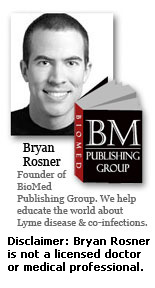

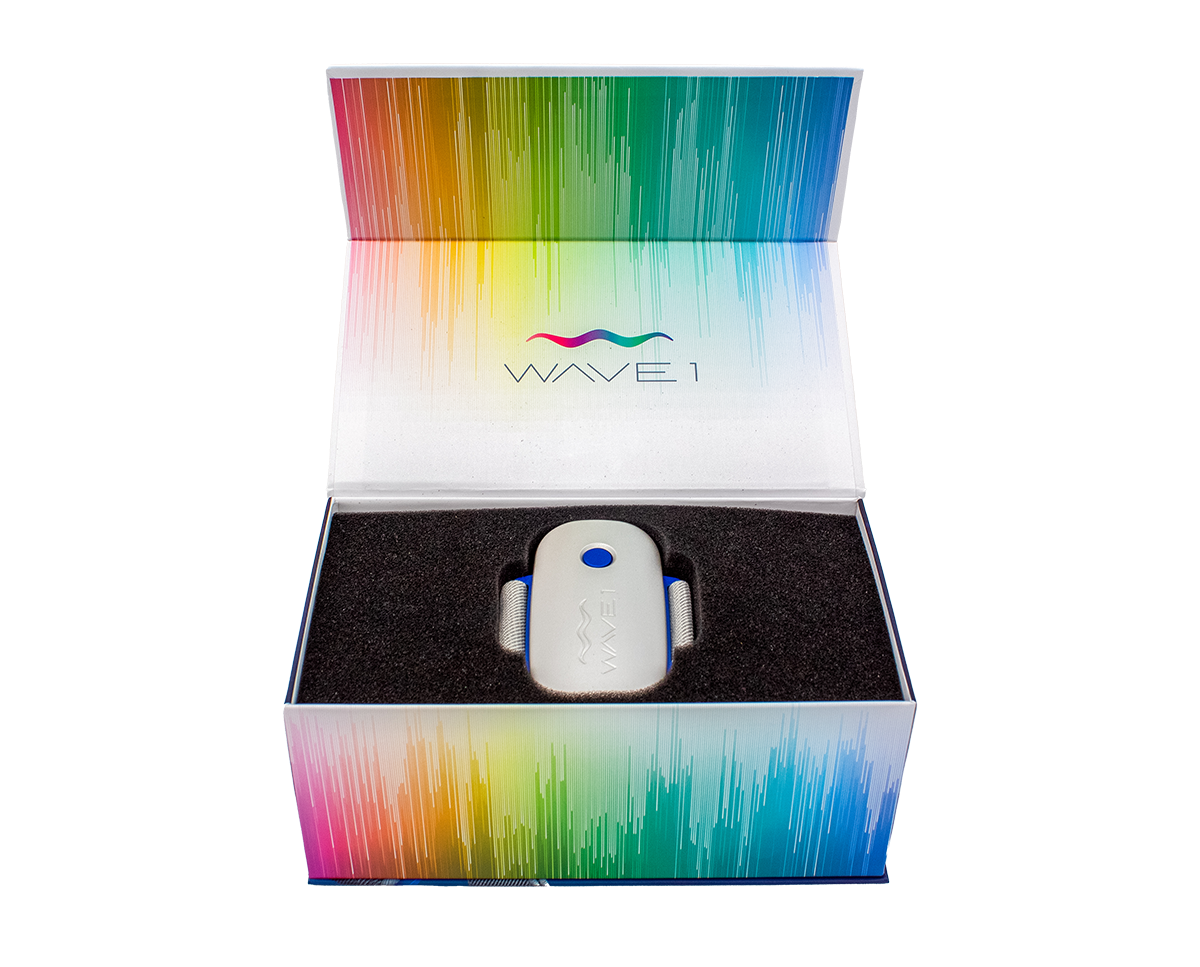




 Dennis Schoen at Researched Nutritionals has sponsored two very informative conferences; now you can get your DVD sets from these conferences, and save $35 when you buy both sets together.
Dennis Schoen at Researched Nutritionals has sponsored two very informative conferences; now you can get your DVD sets from these conferences, and save $35 when you buy both sets together. 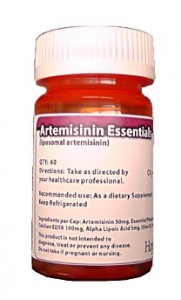

 For those of you who live in Europe and want to learn more about the Cowden Support Program:
For those of you who live in Europe and want to learn more about the Cowden Support Program:
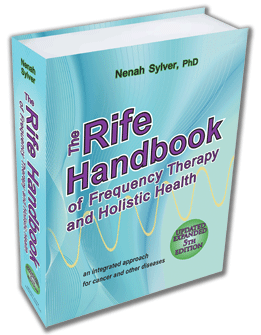


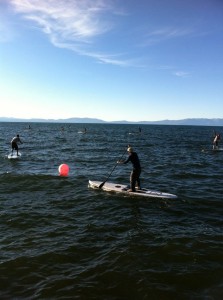
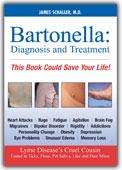 The following is reprinted with permission from Dr. James Schaller’s newest research. I also recommend
The following is reprinted with permission from Dr. James Schaller’s newest research. I also recommend 
